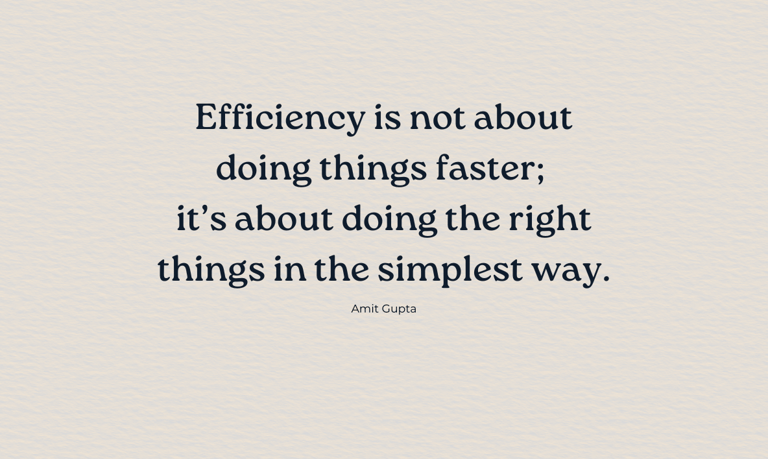What Makes Processes Inefficient?
OPERATIONAL EXCELLENCE


Every business has processes, but not every process is efficient. Over time, inefficiencies creep in—extra steps, poor alignment, outdated practices—until they feel impossible to untangle. But what if uncovering inefficiencies wasn’t as complicated as it seems? Let’s explore the hidden culprits that silently drain your resources and how to spot them.
Efficient processes are the backbone of a thriving business. They help deliver results quickly, minimize waste, and ensure customer satisfaction. But when processes aren’t efficient, they create bottlenecks, delays, and frustration—for your team and your clients.
So, what makes processes inefficient? Here are some common culprits:
Unnecessary Complexity: Over time, processes accumulate extra steps that may no longer serve a purpose. Think about all the approvals and handovers that could be automated or eliminated.
Poor Inputs: Quality inputs lead to quality outputs. If your processes start with incomplete or low-quality data, materials, or instructions, inefficiencies are inevitable.
Misaligned Teams: Efficiency depends on everyone understanding their role. Miscommunication or unclear expectations derail workflows.
Outdated Practices: Just because something worked five years ago doesn’t mean it works now. Processes need to evolve alongside business goals and market demands.
Lack of Feedback Loops: Without regular feedback, inefficiencies go unchecked, and small problems snowball into major issues.
How to Start Spotting Inefficiency:
Ask yourself:
Are there steps in your process that no one can explain why they exist?
Do you frequently deal with rework or missed deadlines?
Are your team members frustrated with unclear workflows or outdated tools?
The first step to STREAMlining your processes is awareness. Once you know where inefficiencies lie, you can start addressing them.
Check out my other articles on Operational Excellence for more insights on optimizing your processes and building systems that truly work for your business.
